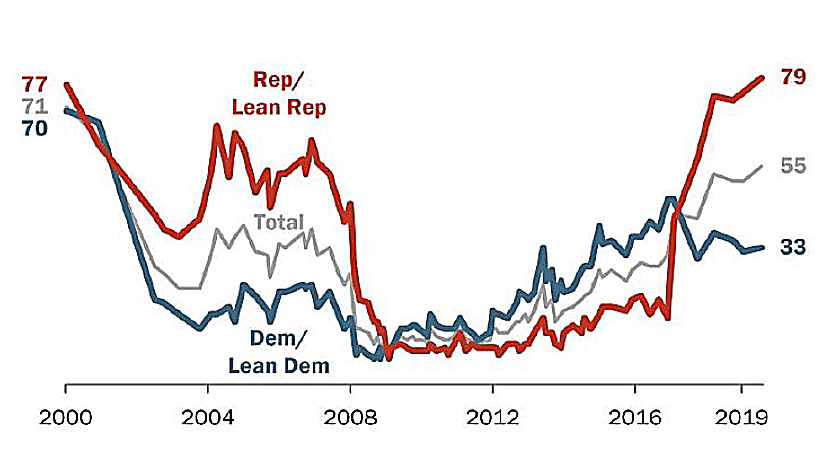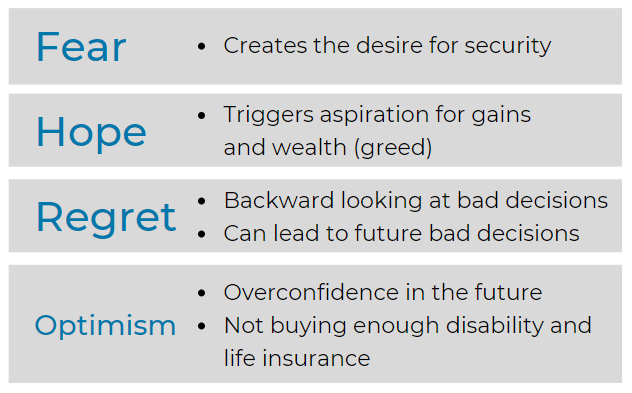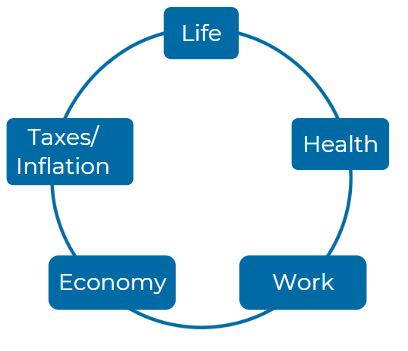Healthcare Provider Update: Healthcare Provider for American Electric Power American Electric Power (AEP) typically collaborates with major health insurance providers for its employee healthcare plans, frequently partnering with organizations such as Anthem Blue Cross Blue Shield. This partnership allows AEP to offer comprehensive healthcare benefits to its employees, including access to various medical services, preventive care, and wellness programs. Potential Healthcare Cost Increases in 2026 Looking ahead to 2026, healthcare costs are projected to rise substantially, driven by a perfect storm of factors. Premiums for Affordable Care Act (ACA) Marketplace plans are expected to see median increases of around 20%, with some states experiencing hikes exceeding 60%. A significant contributor to these increases is the potential expiration of enhanced federal premium subsidies, which could result in more than 24 million enrollees facing out-of-pocket costs rising by over 75%. The combination of rising medical costs, increased demand for healthcare services, and insurer rate hikes paints a concerning picture for consumers relying on these plans in the coming year. Click here to learn more
Featured Video
Articles you may find interesting:
- Corporate Employees: 8 Factors When Choosing a Mutual Fund
- Use of Escrow Accounts: Divorce
- Medicare Open Enrollment for Corporate Employees: Cost Changes in 2024!
- Stages of Retirement for Corporate Employees
- 7 Things to Consider Before Leaving Your Company
- How Are Workers Impacted by Inflation & Rising Interest Rates?
- Lump-Sum vs Annuity and Rising Interest Rates
- Internal Revenue Code Section 409A (Governing Nonqualified Deferred Compensation Plans)
- Corporate Employees: Do NOT Believe These 6 Retirement Myths!
- 401K, Social Security, Pension – How to Maximize Your Options
- Have You Looked at Your 401(k) Plan Recently?
- 11 Questions You Should Ask Yourself When Planning for Retirement
- Worst Month of Layoffs In Over a Year!
- Corporate Employees: 8 Factors When Choosing a Mutual Fund
- Use of Escrow Accounts: Divorce
- Medicare Open Enrollment for Corporate Employees: Cost Changes in 2024!
- Stages of Retirement for Corporate Employees
- 7 Things to Consider Before Leaving Your Company
- How Are Workers Impacted by Inflation & Rising Interest Rates?
- Lump-Sum vs Annuity and Rising Interest Rates
- Internal Revenue Code Section 409A (Governing Nonqualified Deferred Compensation Plans)
- Corporate Employees: Do NOT Believe These 6 Retirement Myths!
- 401K, Social Security, Pension – How to Maximize Your Options
- Have You Looked at Your 401(k) Plan Recently?
- 11 Questions You Should Ask Yourself When Planning for Retirement
- Worst Month of Layoffs In Over a Year!
U.S. Initial Jobless Claims, Per Week

Total U.S. Nonfarm Payrolls

GDP Annualized Growth Rate

During the last 75.75 years (since 1945) there have been 190 declines of 5% or greater.

Sources: Standard & Poor’s Corporation; Copyright 2020 Crandall, Pierce & Company
The Market's Reaction to a Financial Crisis
Cumulative total return of a balanced strategy: 60% stocks, 40% bonds

Indices are not available for direct investment. Their performance does not reflect the expenses associated with the management of an actual portfolio. Past performance is not a guarantee of future results. Not to be construed as investment advice. Returns of model portfolios are based on back-tested model allocation mixes designed with the benefit of hindsight and do not represent actual investment performance. See the “Balanced Strategy Disclosure and Index Descriptions” pages in the Appendix for additional information.


data-hs-cos-general-type='widget' data-hs-cos-type='module'>
Consider these five Elements:
How does the AEP System Retirement Savings Plan compare to other retirement plans offered by AEP, and what are the key features that employees should consider when deciding how to allocate their contributions? In particular, how might AEP employees maximize their benefits through the different contribution types available under the AEP System Retirement Savings Plan?
The AEP System Retirement Savings Plan (RSP) is a qualified 401(k) plan that allows employees to contribute up to 50% of their eligible compensation on a pre-tax, after-tax, or Roth 401(k) basis. AEP matches 100% of the first 1% and 70% of the next 5% of employee contributions, making it a valuable tool for maximizing retirement savings. Employees can select from 19 investment options and a self-directed brokerage account to tailor their portfolios. This plan compares favorably to other AEP retirement plans by offering flexibility in contributions and matching opportunities(KPCO_R_KPSC_1_72_Attach…).
What are the eligibility requirements for the AEP Supplemental Benefit Plan for AEP employees, and how does this plan provide benefits that exceed the limitations imposed by the IRS? AEP employees who are considering this plan need to understand how the plan's unique features may impact their retirement planning strategies.
The AEP Supplemental Benefit Plan is a nonqualified defined benefit plan designed for employees whose compensation exceeds IRS limits. It provides benefits beyond those offered under the AEP Retirement Plan by including additional years of service and incentive pay. This plan disregards IRS limits on annual compensation and benefits, allowing participants to receive higher benefits. Employees should consider how these enhanced features can significantly boost their retirement income when planning their strategies(KPCO_R_KPSC_1_72_Attach…).
Can you explain how the Incentive Compensation Deferral Plan functions for eligible AEP employees and what specific conditions need to be met for participating in this plan? Furthermore, AEP employees should be aware of the implications of deferring a portion of their compensation and how it affects their financial planning during retirement.
The AEP Incentive Compensation Deferral Plan allows eligible employees to defer up to 80% of their vested performance units. This plan does not offer matching contributions but provides investment options similar to those in the qualified RSP. Employees may not withdraw funds until termination of employment, though a single pre-2005 contribution withdrawal is permitted, subject to a 10% penalty. Employees need to consider how deferring compensation affects their cash flow and long-term retirement plans(KPCO_R_KPSC_1_72_Attach…).
How can AEP employees achieve their retirement savings goals through the other Voluntary Deferred Compensation Plans offered by AEP? In addressing this question, it would be essential to consider the specific benefits and potential drawbacks of these plans for AEP employees in terms of financial security during retirement.
AEP's other Voluntary Deferred Compensation Plans allow eligible participants to defer a portion of their salary and incentive compensation. These plans are unfunded and do not offer employer contributions, making them ideal for employees seeking additional tax-advantaged retirement savings. However, since they are not funded by the company, participants assume some risk, and the plans may not provide immediate financial security(KPCO_R_KPSC_1_72_Attach…).
What options are available for AEP employees to withdraw funds from their accounts under the AEP System Retirement Plan, and how do these options compare to those offered by the AEP System Retirement Savings Plan? AEP employees need to be informed about these withdrawal options to make effective plans for their post-retirement needs.
Under the AEP System Retirement Plan, employees can access their funds upon retirement or termination, with options including lump-sum payments or annuities. The AEP System Retirement Savings Plan offers more flexibility with in-service withdrawals and various distribution options. Employees should carefully compare these withdrawal choices to align with their retirement needs and tax considerations(KPCO_R_KPSC_1_72_Attach…).
In what scenarios might AEP employees benefit from being grandfathered into their retirement plans, and how does this affect their retirement benefits? A comprehensive understanding of the implications of being grandfathered can provide significant advantages for eligible AEP employees as they prepare for retirement.
AEP employees grandfathered into older retirement plans, such as those employed before 12/31/2000, benefit from higher retirement payouts under previous pension formulas. This offers a significant advantage, as employees can receive more favorable terms compared to newer cash balance formulas. Understanding these grandfathered benefits can help eligible employees plan for a more secure retirement(KPCO_R_KPSC_1_72_Attach…).
How can AEP employees take advantage of the matching contributions offered under the AEP System Retirement Savings Plan and what strategies can be implemented to maximize these benefits? Understanding the contribution limits and matching algorithms of AEP is crucial for employees aiming to enhance their retirement savings.
AEP employees can maximize matching contributions under the AEP System Retirement Savings Plan by contributing at least 6% of their compensation, receiving a 100% match on the first 1% and 70% on the next 5%. To enhance savings, employees should ensure they are contributing enough to take full advantage of the company's match, effectively doubling a portion of their contributions(KPCO_R_KPSC_1_72_Attach…).
What are the key considerations for AEP employees regarding the investment options available in the AEP System Retirement Savings Plan, and how can they tailor their portfolios to align with their long-term financial goals? Employees should be equipped with the knowledge to make informed investment decisions that influence their retirement outcomes.
The AEP System Retirement Savings Plan offers 19 investment options and a self-directed brokerage account, providing employees with a variety of choices to build their portfolios. Employees should evaluate these options based on their risk tolerance and long-term financial goals, aligning their investments with their retirement timeline and desired outcomes(KPCO_R_KPSC_1_72_Attach…).
As AEP transitions into more complex retirement options, what resources are available for employees seeking additional assistance with their benefits, particularly regarding the complexities of the AEP Supplemental Retirement Savings Plan? It’s essential for AEP employees to know where and how to obtain accurate support for navigating their retirement plans.
As AEP introduces more complex retirement options, employees can access resources such as financial advisors, internal retirement planning tools, and educational webinars to navigate their benefits. Understanding these resources can help employees make informed decisions, particularly when dealing with the intricacies of the AEP Supplemental Retirement Savings Plan(KPCO_R_KPSC_1_72_Attach…).
How can AEP employees contact the company for more information regarding their retirement benefits and plans? Knowing the right channels for communication is important for AEP employees to gain clarity and guidance on their retirement options and to address any specific inquiries or uncertainties they may have about their benefits.
AEP employees can contact the company’s HR department or use online portals to access information about their retirement benefits and plans. Timely communication through these channels ensures employees receive support and clarity regarding any concerns or inquiries related to their retirement options(KPCO_R_KPSC_1_72_Attach…).
/General/General%207.png?width=1280&height=853&name=General%207.png)



















-2.png?width=300&height=200&name=office-builing-main-lobby%20(52)-2.png)









.webp?width=300&height=200&name=office-builing-main-lobby%20(27).webp)


-2.png)









.webp)